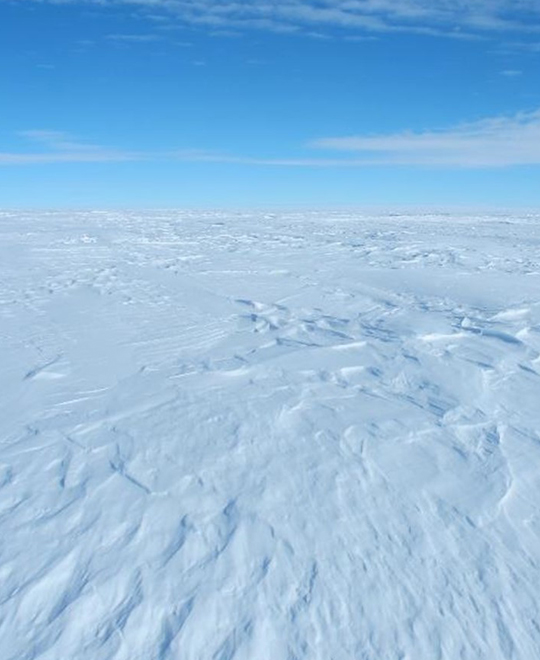Studio 28
With/In Antarctic Extremes
Miranda Nieboer

This studio is available to students enrolled in ABPL90142 Studio C, ABPL90143 Studio D, and ABPL90115 Studio E.
Studio Description
At the core of this research by design studio lies Antarctica as one of the most extreme environments on Earth, with its everchanging icescape and its dynamic environmental forces.
Within the studio the overarching questions which the students will aim to address are:
- How can the Antarctic material conditions and environmental forces reinform our understanding of site specific design?
- How can Antarctica help us in rethinking architectural conventions when we listen to the continent and take its material and climatic conditions into account?
- What architectures can be developed when attending to Antarctica and embracing the notions of change, unpredictability, urgency and contingency?
In other words the students are encouraged to think and shape spatial propositions that embrace and care for a glacial thinking. Instead of a passive white empty screen or canvas, Antarctica acts here in this studio as a critical and dynamic environment for alternative architectures.
Studio Outcomes
Instead of visiting Antarctica, the studio will welcome in the first term (inter)national experts who can testify firsthand of the continent. Through various perspectives from different fields, such as research, logistics, support, and medicine the students are invited to look beyond the boundaries of the architectural discipline. Additionally the digital tool Quantarctica (open access) provides Antarctic geographical, environmental, climatic, and glaciological datasets and visualisations that will form the basis of a site-analysis which will be conducted in small groups.
Through an in depth knowledge of the site (group work), additional reading, and the student’s own research interest, a brief or program will be developed. Each student will individually propose a spatial concept and present a preliminary design during the midterm review.
The second half of the semester continues to have its focus on the design and includes an individual technical elaboration which involves the structure and detailing of the student’s architectural proposition. This process will be supported by engineering consultancy sessions. Students are encouraged to conduct their research through a wide range of experiments which include physical and digital models, sketches, drawings, and montages.
*Note: this studio will in the first weeks operate through research in small groups. It is expected that students are able to work professionally in groups of max 4. The groups act as small research hubs. Towards the mid term review each student develops an individual project proposition.
Studio Leader
Miranda Nieboer is an affiliated IMAS researcher in spatial and cultural studies. She has a background in Architecture and Building Engineering. Before moving to Australia to conduct her PhD research, she was a practicing architect and senior lecturer in the Netherlands. Miranda has been researching, exhibiting, and lecturing on human inhabitation in extreme environments for more than 20 years. During her research into Antarctic interiors Miranda joined a logistical Antarctic traverse which enabled her to develop an embodied understanding of inhabiting the continent. With an interdisciplinary approach her research builds bridges between different research disciplines that investigate the southernmost continent.
Readings & References
We will start with reading these three papers:
- Brooks, Shaun T., et al. “Our Footprint on Antarctica.” Nature Sustainability 190, no. 2 (2019): 185–190.
- Hemmings, Alan D. “Why Did We Get an International Space Station Before an International Antarctic Station?” The Polar Journal 1, no. 1 (2011): 5–16.
- Wylie, John. “Becoming-Icy: Scott and Amundsen’s South Polar Voyages, 1910–1913.” Cultural Geographies 9 (2002): 249-265.
An additional list with recommended papers and videos will be provided to students in week 1. To bring Antarctica closer to home the studio will also involve guest lectures from Antarctic experts.
Schedule Tuesdays 14:30-17:30, Fridays 14:30-17:30